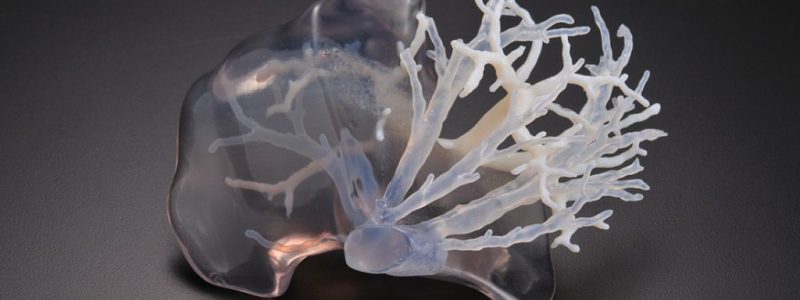Three-dimensional (3D) printing is a rapid prototyping technology that has gained increasing recognition in many different fields. This technology has been around since the early 1980’s invented by Charles Hull who called it “stereolithogaphy” (1). 3D printing is an additive manufacturing process which fuses or deposits materials—such as plastic, metal, ceramics, powders, liquids, or even living cells—in layers to pro-duce a 3D object. This process is also referred to as rapid prototyping (RP), or solid free-form technology. Recently, 3D printing has gained considerable atten-tion in the medical field. Its applications have the po-tential to transform the medical field. 3D printing in medicine can be broadly organized in the following categories:
- Creation of customized prosthetics;
- Creation of anatomical models for pre-surgical plan-ning and training;
- Production of custom implants;
- Tissue and organ fabrication;
- Pharmaceutical research regarding drug dosage forms, delivery, and discovery (1).
How does medical 3D printing work?
The process starts with creating a digital 3D model on a computer in the form of a CAD (Computer Aided design) file. Two dimensional (2D) radiographic images from x-rays, MRI and CT scans can be imported into specialized medical im-aging software such as Materialise’s MIMICS software and processed to create a digital 3D anatomical model (1). The digital model file can then be printed into a 3D model.
Why use 3D printing in medical applications?
The application of 3D printing in medical applications can reap many benefits for the medical community and the patients too. The main advantage is the customization and personalization of medical products and solutions in the form of custom implants, prosthetics, orthotics and pre-surgical planning anatomical models. Custom implants and prosthetics can provide a unique perfect fit for the pa-tient, decreasing the time of surgery and recovery time (1).
Moreover, the 3D printing manufacturing process is very fast, meaning the product can be ready in a matter of hours. In addition to the speed of the production, the resolution, accuracy, reliability and repeatability of the 3D printed products are an added benefit (2).
Furthermore, there are an array of materials, design options and printing technologies available in the market. This allows the medical community the freedom of design and characteristics to innovate an ideal solution for their patients (1).
3D printing technologies and methods are evolving with increas-ing speed and intensity. It’s entry into the medical sector entails a plethora of concerns about safety and security, patent and copyright and regulation. However, as the printing technology, resolution and available material have increased, so have the ap-plications. The numerous benefits and adaptability of 3D print-ing technology make it easy to predict that in some scenarios 3D printed solutions will soon become the norm.
To get a better point of view about the current practices relat-ing medical 3D printing attend the “Seminar on 3D Printing for Surgical Planning” hosted by Medetarian Conferences Organizing (MCO) and brought to us by Materialise, one of the world’s leading medical imaging software companies, in association with Sheikh Khalifa Medical City (SKMC) and Khalifa University
Register for our 3D Printing Seminar.
References
1.Ventola C.L. Medical Applications for 3D Printing: Current and Projected Uses. Pharm. Ther. 2014;39:704–711. [PMC free article] [PubMed]
2.3D Hubs. (2017). The advantages of 3D Printing. [online] Available at: https://www.3dhubs.com/knowledge-base/advantages-3d-printing [Accessed 16 Oct. 2017].

